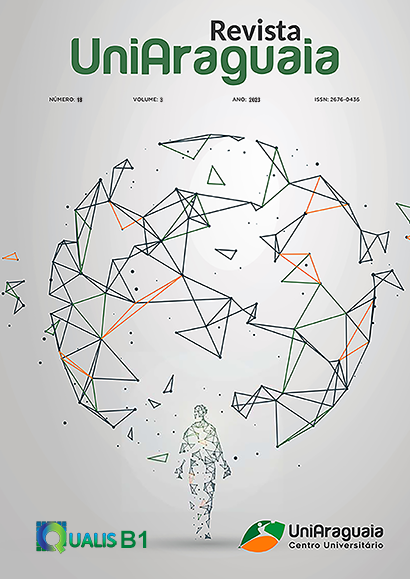EMERGENCE AND INITIAL DEVELOPMENT OF MURICI SEEDLINGS (Byrsonima verbascifolia (L.) RICH.) UNDER DIFFERENT SUBSTRATES
Palavras-chave:
fruit native, Cerrado, seed, germinationResumo
The genus Byrsonima Rich. (MALPIGHIACEAE), whose species are popularly known as "murici" constitutes a complex of about 150 species, of which 95 can be found in Brazil, and have potential for cultivation in view of their multiple possibilities of use in timber, food and pharmaceutical industries. Despite constituting a complex of species, they are rarely cultivated. The objective of this work was to evaluate of the type of substrate on the germination and initial development of murici seedlings. The experimental treatments used seven types of substrates (T0: commercial substrate (control treatment); T1: commercial substrate + washed coarse sand (1: 1); T2: cattle manure + commercial substrate + soil (1: 1: 3); T3: cattle manure + soil (2: 3); T4: carbonized rice husk + commercial substrate + soil (1: 1: 3); T5: commercial substrate + sand + soil (1: 1: 1); T6: coarse washed sand + soil (1: 1). The experiment was carried out in a greenhouse, under a complete randomized block design, with four replicates and three plants per plot. The biometric variables were: plant height, number of plant leaves-1 and the neck diameter at 80, 95, 125, 155, 185, 215, 245 and 275 days after sowing (DAS). At 275 DAS, destructive analysis was performed to determine the fresh and dry biomass of shoot and roots and the length of the largest root. The percentage of emergence, height and diameter of plants did not differ between treatments. Substrates composed of: soil, carbonized rice husk, commercial substrate and washed coarse sand, favor the daily growth rates of shoot and the development of the root system of murici seedlings. The transplanting of seedlings to the field at 200 DAS may help to maintain a larger amount of leaves in the seedlings.
Downloads
Publicado
Edição
Seção
Licença
O autor pode ainda, imprimir e distribuir cópias do seu artigo, desde que mencione que os direitos pertencem a REVISTA UNIARAGUAIA.
Os direitos de autor incluem o direito de reproduzir na íntegra ou em parte por qualquer meio, distribuir o referido artigo, incluindo figuras e fotografias.
Ao submeterem originais à REVISTA UNIARAGUAIA, o(a) autor(a) ou autores manifestam concordância com os seguintes termos:
a) Autores mantém os direitos autorais e concedem à REVISTA UNIARAGUAIA o direito de primeira publicação, com o trabalho simultaneamente licenciado sob aLicença Creative Commons Attributionque permite o compartilhamento do trabalho com reconhecimento da autoria e publicação inicial nesta revista.
b) Autores têm autorização para assumir contratos adicionais separadamente, para distribuição não-exclusiva da versão do trabalho publicada nesta revista (ex.: publicar em repositório institucional ou como capítulo de livro), com reconhecimento de autoria e publicação inicial nesta revista.
c) Autores têm permissão e são estimulados a publicar e distribuir seu trabalho online (ex.: em repositórios institucionais ou na sua página pessoal) a qualquer ponto antes ou durante o processo editorial, já que isso pode gerar alterações produtivas, bem como aumentar o impacto e a citação do trabalho publicado

